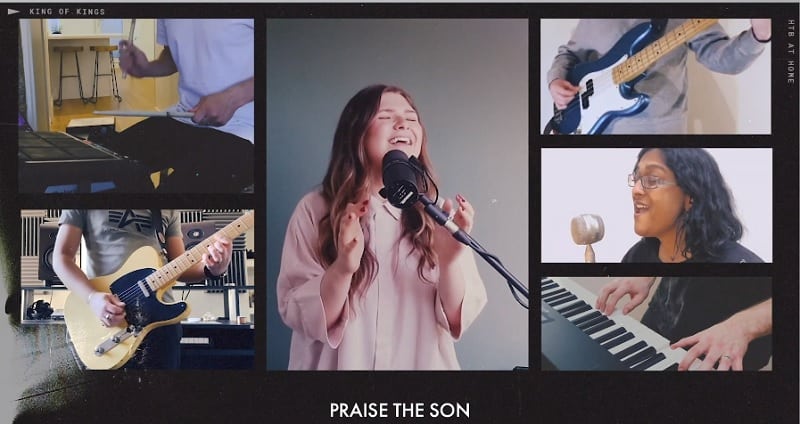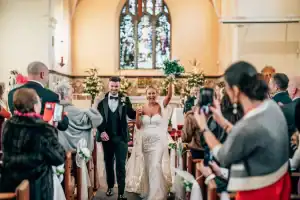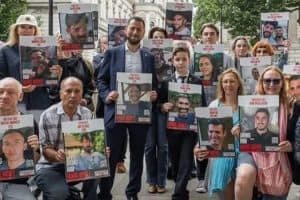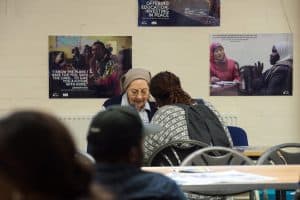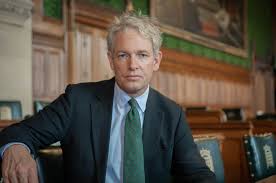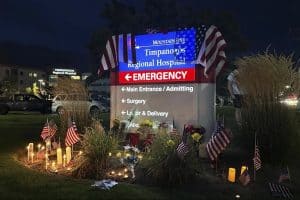By Andrew Brown
Not since 1205 have the church buildings of England all been closed. Even then, there was no ban on Christians gathering together. Yet it is now illegal for Christians to come together for worship, or even to enter churches, unless they actually live in the same building, as many Roman Catholic and some Anglican clergy do.
For some clergy the results have been entirely disorienting. Even those who are themselves comfortable online worry about their older parishioners. “Look at our demographic,” says one Anglican rural dean, with nine village churches in his care: “Most of them are still trying to find the hatch on the computer where you pour the methylated spirits in.”
But in places where the internet is both understood and freely available, the present crisis has brought about a huge rise in practice and interest. HTB (Holy Trinity Brompton), the nearest the Church of England has to a megachurch, had an audience of 5,000 for one service.
From St Mary’s Roman Catholic Church, Clapham, where a livestreamed service drew 1,600 viewers from round the world, to the kitchen table of the Rev Miranda Threlfall-Holmes, an Anglican priest with a parish in a deprived area of Liverpool, who found that her celebration of morning prayer, which might attract six people in church, now had 40 following along on Facebook, the lockdown has produced a surge of virtual attendance that far outstrips the physical numbers.
HTB, the home of the Alpha course, has signed up 400 people for its next one, and is starting an overlapping one a week later, something that could not have happened while the courses were done face-to-face. The church also reports a huge surge of interest in its marriage course. Perhaps as a result of the lockdown, 1,000 couples have signed up for a virtual version of its course on how to overcome the difficulties of the married state – something normally taken two years after the wedding.
Gary Alderson is a non-stipendiary minister, which means that for all his ordination training and his work as a curate he has also held down a full-time job, so that that the sacramental work has had to be fitted around that. Now furloughed, he is relishing the free time, and the ability to attend, if virtually, as many services as he wants: “In a weird kind of way I have never known so much regular worship corporately. It’s always been an individual exercise for me, and this is lovely.”
He can watch morning prayer with 20 other people streamed from Loughborough church; then an Anglo-Catholic mass at lunchtime; at four o’clock the organist in one of his old parishes is streaming hymns and requests, and in the evening another church he knows is streaming compline.
It is important to him, as it is to Miranda Threlfall-Holmes, that the services are not too perfect, nor pre-recorded. When they are shown over Facebook, the vicar can see and recognise the people who watch; there are also comments during and after the service. Only the coffee after the service, says Dr Threlfall-Holmes, is shown over Zoom, which promotes a different kind of sociability.
Yet there are central aspects of Christianity that cannot be digitised. For Catholics, a large part of the problem is the inability physically to take communion. Father Richard Reid, CSsR, the vocations director of the Redemptorists order in London, points out that the prayer for spiritual communion that Pope Francis has used and urged other Catholics to use in the pandemic was written by the founder of his order.
This provides some comfort, but not enough. Father Richard has been posting on six websites, run either by his parish or his order, every day: “We’re desperate to make sure that people know we are there, and we still love them, and care for them, and miss them dreadfully.
“The internet is a wonderful thing. However, you can’t beat community. You can’t beat people being together. We need intimacy, all of us.”
Even more painful than the absence of the eucharist is the inability to share touch with the dying. Because the disease is so contagious, the critically ill see no human faces in the intensive care unit, only masks; and should they come to the point of death, they cannot be anointed with oil, as Catholic tradition requires. Instead, he says, in some hospitals, cotton buds are used instead of hands.
Compared with the loss of touch at such a moment, the loss of church buildings seems a small thing.

